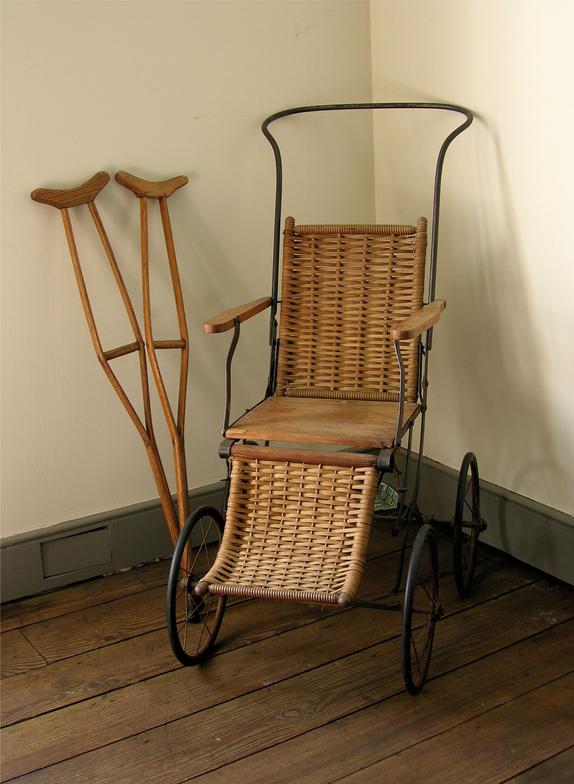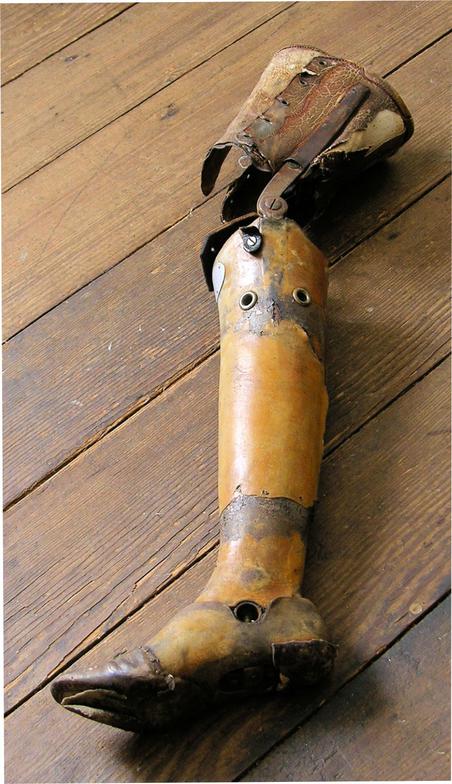Learn about Mary Rohrer...
A Sad Summer...A Long Meaningful Life
Mary Rohrer, a five year old Mennonite child, lived with her family on a farm in the Dry River community of Rockingham County, near Dayton, Virginia. In the summer of 1908, Mary had a terrible accident while playing on a piece of farm equipment. Her life and her family's life was changed forever. But Mary survived the tragedy and triumphed over her injury. With the help of her loving family, dedicated doctors and other people who supported her, Mary would walk again and live a long and meaningful life.
One day in August Mary decided to play on the corn grinder while the horses walked around in a circle to turn the machine. With a quick jump, Mary sat on the crossbar of the grinder as she rode round and round like a merry go round. Suddenly she felt herself pulled forward with a strong jerk, as her foot caught in the corner leg of the grinder. When Mary looked down, her right foot was missing.
The family quickly ran to a neighbors house and called Dr. Ashby Turner from nearby Hinton to come and help Mary. Dr. Turner soon realized he needed assistance to operate on Mary's leg and called Dr. Rolston from Mount Clinton and Dr. Payne from Dayton. By the time the doctors arrived, her mother's kitchen table was converted to a surgical table under the three bright kerosene lamps hanging from the ceiling.
During the next several days after her surgery, Mary struggled with the throbbing pain coming from what was left of her leg. The doctors had removed her shattered limb just below her knee. Many visitors carried food and good wishes and prayers to Mary and her family as she recuperated from her injury. When the pain was too great, her Papa would carry her in his arms as the family sang hymns to help her feel better.
Everyday Dr. Turner would come to check on Mary and encourage her recovery. One day, Mr. Southard, the neighborhood blacksmith, brought Mary a surprise - a pair of crutches just her size. Once Mary learned to walk on the crutches, she could move around the house and go outside again. On another day, her Aunt Mattie arrived with a child- sized wheelchair, so her brothers and sisters could wheel her around the backyard.
Soon it was autumn and time for the other children to go off to school. Mary sadly watched them walk down the road while she stayed at home. But Papa had a plan to help Mary walk again. Soon she and her father were boarding a train at Dayton and riding to Washington! Papa had found a place that could make Mary a new leg...
Mary and Mr. Rohrer spent several days in the city while one of the people at the Hanger Company measured and fitted her new limb. During their sightseeing around town, they noticed a little stuffed bear in a toy store window. It was one of the first Steiff bears which were made in Germany. The bears became known as "Teddy Bears" after President Teddy Roosevelt refused to shoot a bear during one of his hunting trips. As a souvenir of her trip, Papa bought the bear for Mary.
After Mary and her father returned home to Dry River, she had to wait for her new leg to be delivered in the mail. Soon after Christmas the special day came and her new artificial limb arrived. Papa helped her fit the leg as they had been taught at the Hanger factory. After a few attempts Mary was stepping around the room without her crutches! Soon she was walking much faster and playing with her brothers and sisters.
When school started again Mary managed quite nicely to walk across the swinging bridge over Dry River and make her way to school.
Fort Harrison is honored to display Mary's artificial limb, as well as many other items that she used over the years. Mary Rohrer passed away in 1996, at the age of 93.
James Hanger Makes a Difference
James E. Hanger was born and raised at his family's farm, Mount Hope, near Churchville, Virginia, a community just west of Staunton and only about twenty miles from Mary's house at Dry River.
At the age of eighteen, James was studying engineering at Washington College in Lexington. When the Civil War began, James left school to join his brothers in the Confederate Army. The day after James arrived at camp, June 3, 1861, a Union cannonball hit the stable where the soldiers spent the night, striking James' s left leg below the knee. A few hours after his injury, he was found by Union soldiers and his leg was amputated by one of their surgeons.
James Hanger would become one of the very first amputees of the Civil War, one of 50,000 amputations performed during the conflict. In August, 1861 he returned home as part of a prisoner exchange. The Union doctors had fitted him with a "peg leg", standard procedure at the time.
According to family tradition, upon his return home James secluded himself in his upstairs bedroom, as the family worried that he was depressed about his injury. In reality, he was putting all his efforts into developing the first articulated prosthetic leg with knee and ankle joints. Soon he received a patent for his work and the Virginia state government commissioned him to manufacture limbs for wounded soldiers.
When Mary and her father traveled to Washington to have her fitted for her first artificial limb, Mr. Hanger would have been retired but was still president of his company. All of his adult sons worked in the family business so it is likely one of them measured Mary for her first artificial leg.
James Hanger died in 1919, after the Hanger Company was involved in treating World War One patients. His legacy lives on in a worldwide company dedicated to the development of prosthetics and orthotics for veterans and other amputees.
Learn more about Mary' triumph over tragedy. Read " Summer of the Lost Limb" by Janis Good.





